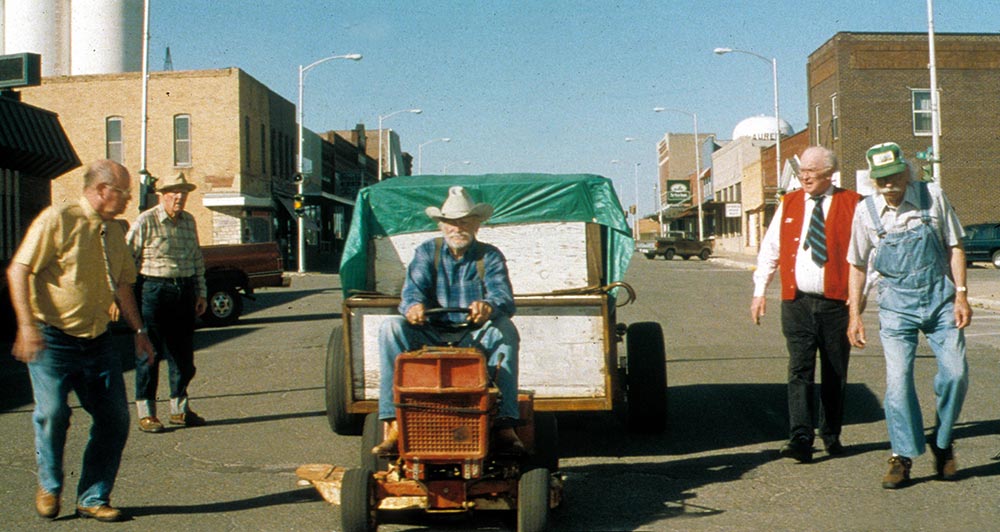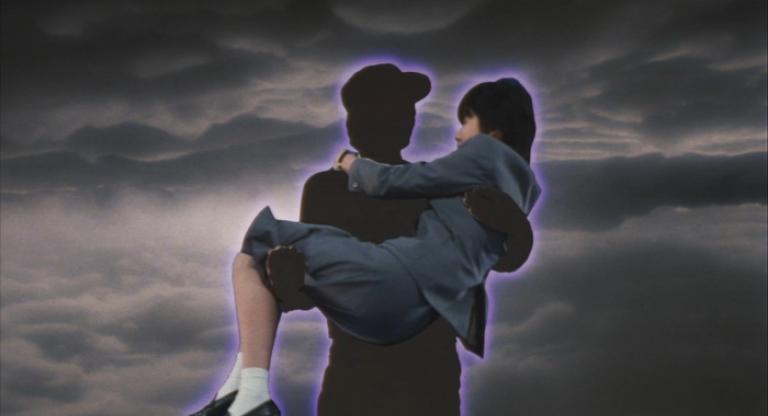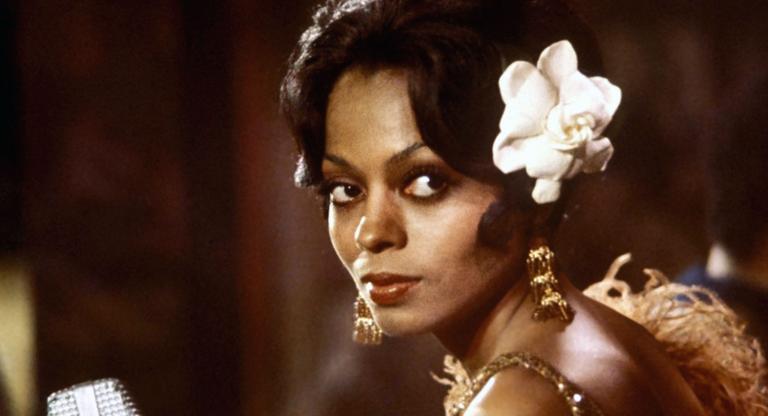The Guardian punned “Mr Weird plays it Straight” when David Lynch’s The Straight Story (1999) came out. Plenty more observers were similarly amused by his decision to take a mostly realist approach to a simple tale of an elderly man going on a 240-mile road trip to reconcile with his estranged brother. For his part, Lynch has said that, since he forewent many of his usual fantasy elements and surrealistic touches and shot it in chronological order, this may be his “most experimental film.” But despite the novelty of a gentle G-rated picture in an oeuvre full of brutality and abuse, The Straight Story is unmistakably Lynchian, in ways that go beyond how its opening scene directly quotes the one in Blue Velvet (1986).
Though the film is based on a true story, the central image of an old man on a riding mower towing a small trailer over the enormous flatness of the Midwest is uncanny enough that one could see the appeal the concept would hold for Lynch. The narrative takes Alvin Straight (Richard Farnsworth turning in a definitive “aged character actor making the most of a rare lead” final performance) across Iowa at five miles per hour, never passing through a town with a population over a few thousand. The journey is structured as a series of brief encounters, individually workable as short stories and together gathering thematic heft.
Each person Straight meets, relates with, and imparts a bit of wisdom to is progressively older than the one before, compressing the arc of aged experience into less than two hours. There’s first a pregnant teenager running away from home, then a group of twenty-something bicyclists reveling in their fitness but curious about getting older, a thirty-something working woman bemoaning how often she kills deer on her commute, and so on. These encounters distill Lynch’s fascination with the everyday in his work, evident in the quirky small-town idiosyncrasies of Twin Peaks and the white-picket-fence parts of Blue Velvet. But whereas those works contrast such slices of recognizable life with dark, often evil societal undercurrents, in The Straight Story people are simply kind and courteous.
Which is not to call the movie lightweight or simple. Here, Lynch laces the mundanity with melancholy and reflection rather than horror; civility masks not darkness but sadness, regret, uncertainty, or grief. The trip is spurred by Alvin’s brother’s stroke and his own bad fall providing a sharp reminder of their mortality; death and loss linger in many of his meetings. Alvin’s chipper daughter (a luminous Sissy Spacek) mourns having her children taken away from her. Alvin and a fellow World War II veteran trade harrowing war experiences over Alvin’s first drink in a decade. He tells the cyclists that the worst part of being old is “remembering being young,” while the commuting woman is flabbergasted by how deer seemingly come out of nowhere to dash themselves against her fender. (“I have hit 13 deer in seven weeks driving down this road, mister! And I have to drive down this road!” is one particularly unsubtle metaphor embedded within an extremely amusing, Lynchian quote.) The outside context of Farnsworth’s terminal cancer, which would drive him to take his own life not long after this film’s release, lends even greater poignancy to these episodes.
The Straight Story is Lynch’s version of a Western, emphasized by the scope of the landscape and Angelo Badalamenti’s acoustic-and-harmonica-heavy score (unbelievably soulful and tender, it is one of his most underrated efforts). Where much of that genre is structured around individualism and alienation within the unfathomable American expanse that facilitates violence, Lynch frames it around the story of one man seeking to rekindle fraternal love and constantly making connections. Lynch commented that “Tenderness can be just as abstract as insanity,” and in his hands, random acts of kindness can seem just as baffling as cruelty.
The Straight Story screens this afternoon, June 9, at the Museum of the Moving Image on 35mm as part of the series “MoMI Moviehouse” and “See It Big at the ‘90s Multiplex.”



